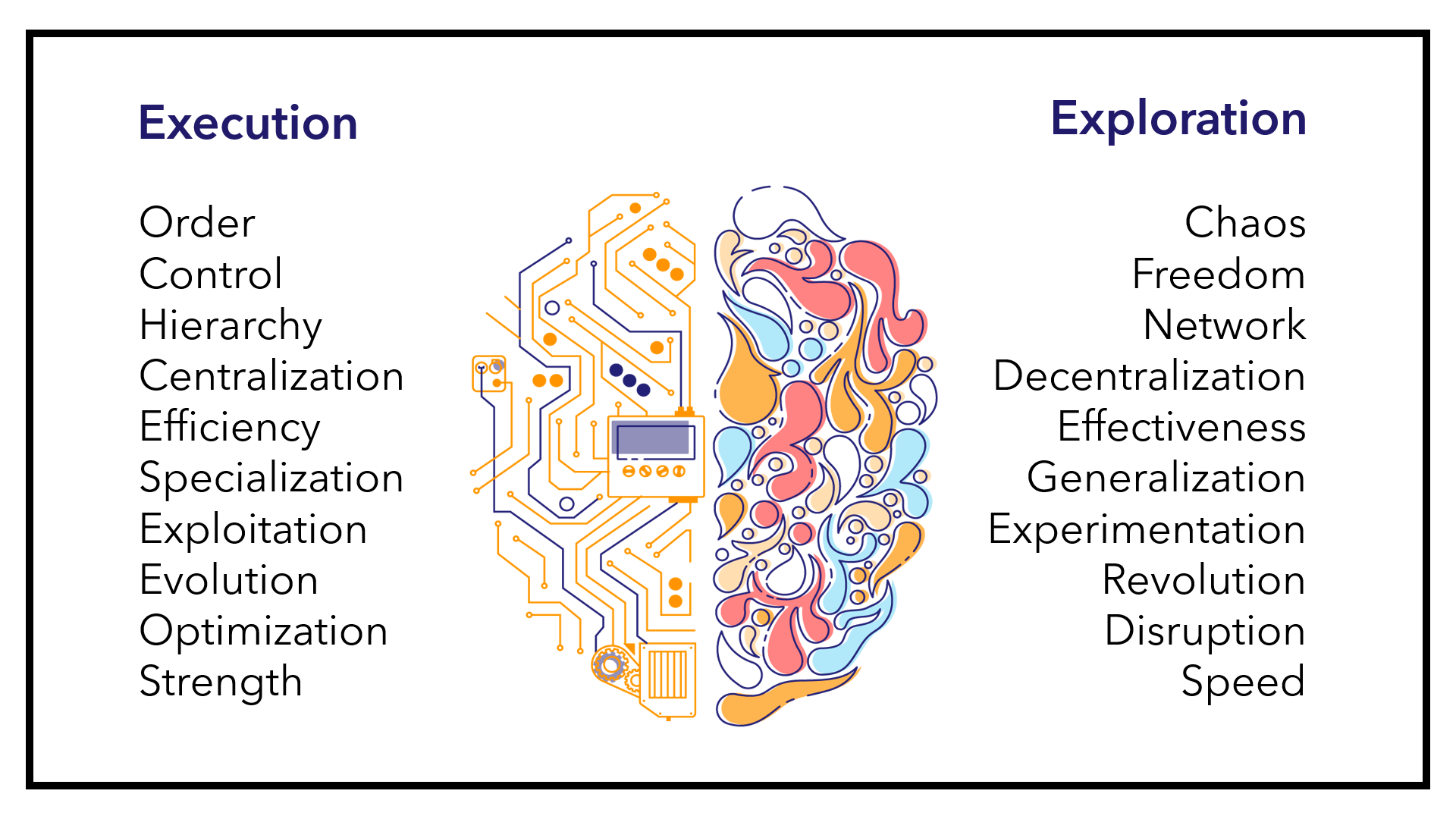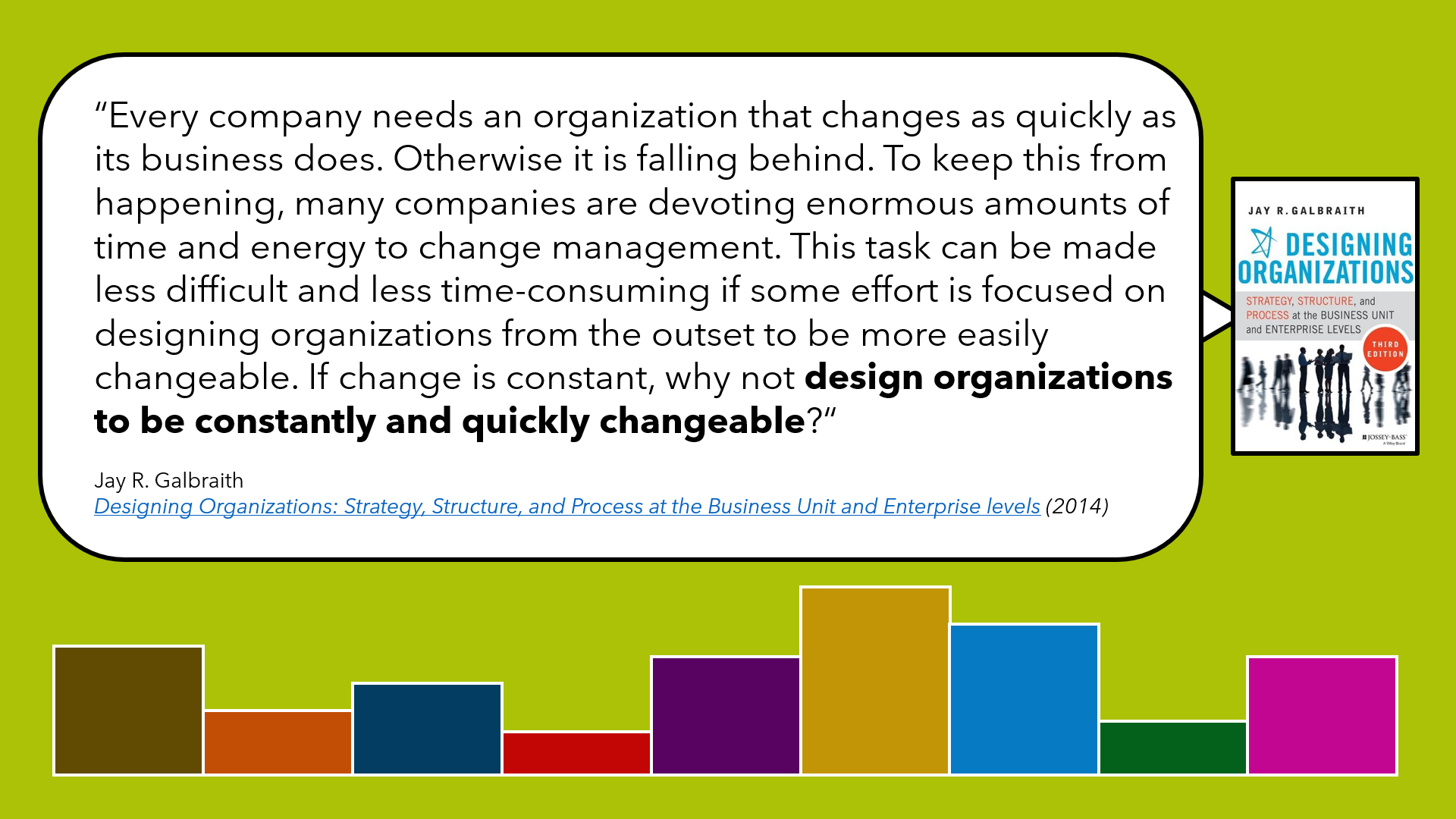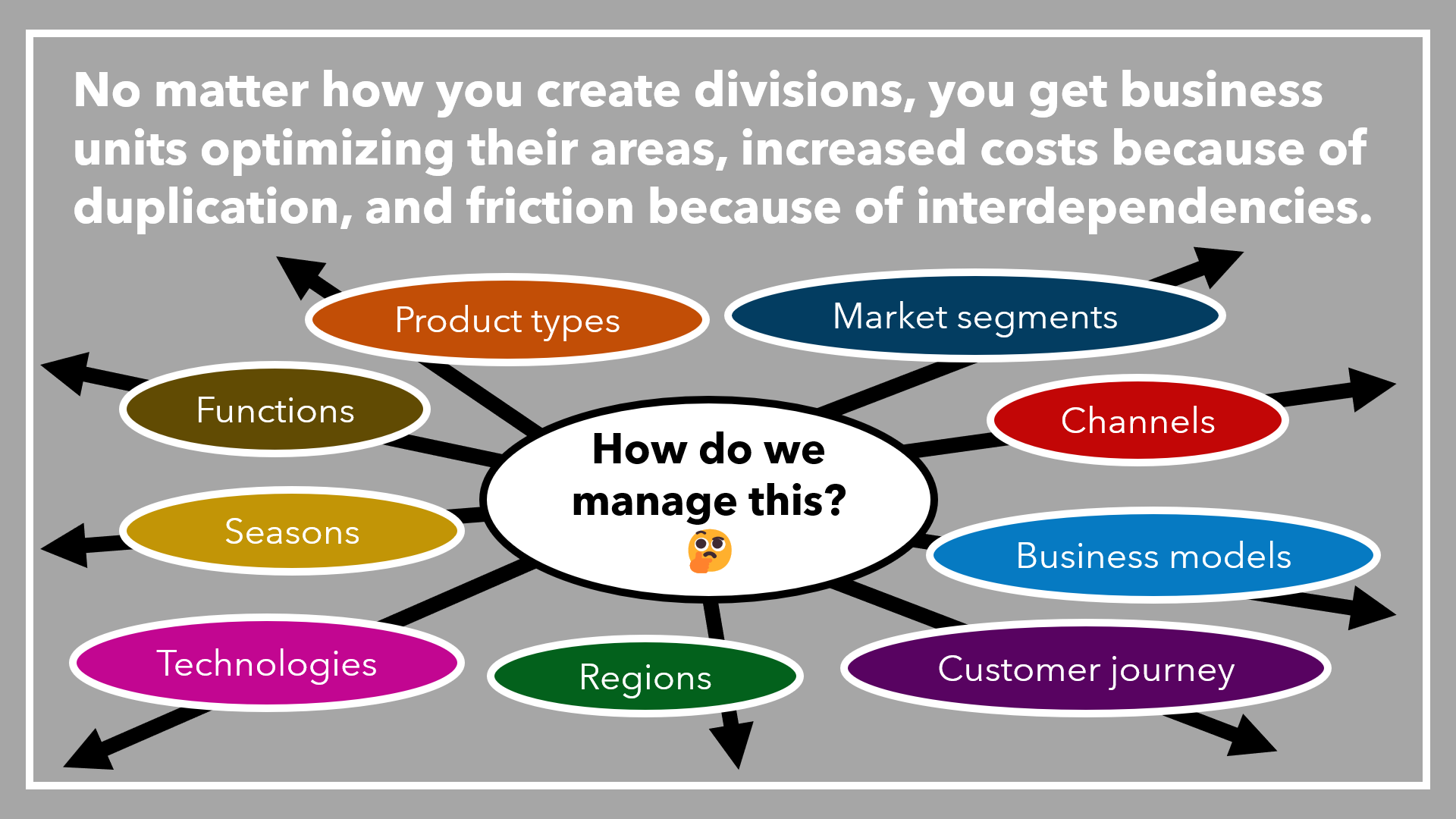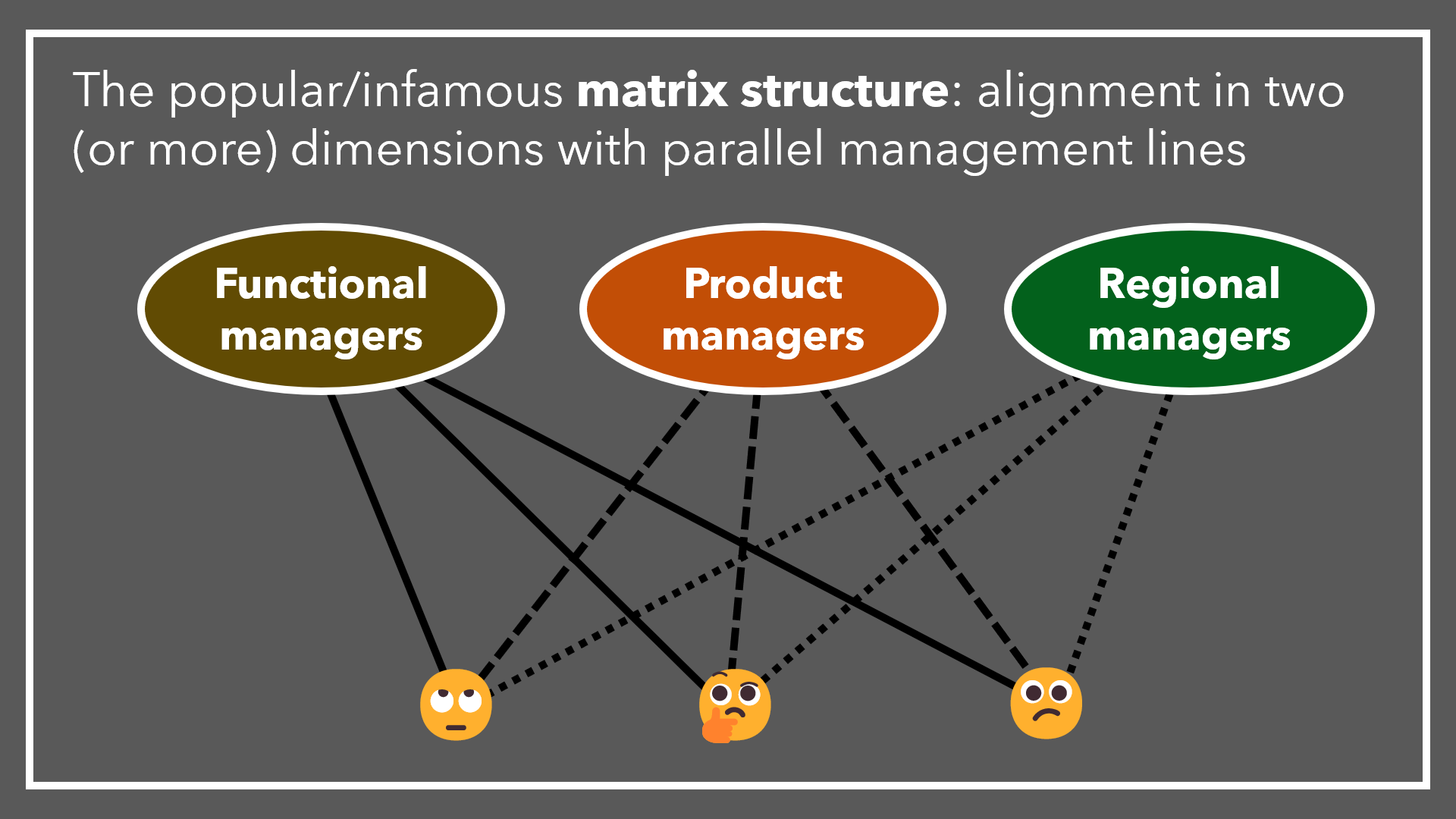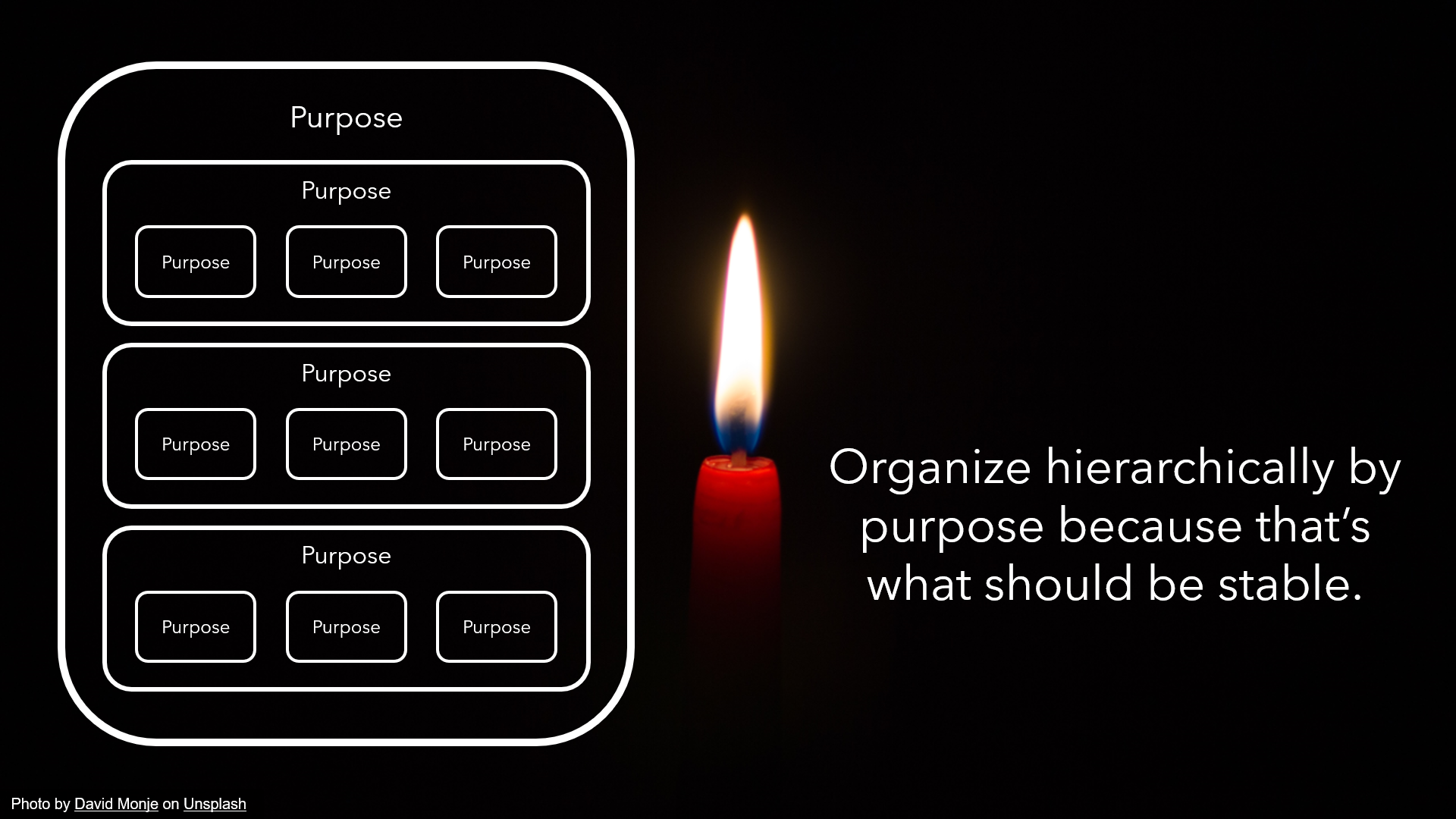How Do We Keep the Business Agile and Aligned?
Author: Jurgen Appelo
Business life is a complicated thing. We want our organizations to be efficient and effective, centralized and decentralized, optimized and disruptive. We want it all, but we struggle and bounce from one extreme to another. We suffer in top-down controlled hierarchies, and we are confused by the outcomes of free, anarchistic networks.
The million-euro question is,
"How do we keep the business aligned and agile?"
One thing I learned about organization design is that form follows function. In other words, when we want our business to survive and thrive in a rapidly changing environment, that's what we should design for. We need it to be constantly and quickly changeable. We need it to be a shapeshifter.
But how can we do that?
How can we have an organization design aligned on a goal but agile in execution?
Dividing the Work
Let's imagine that you launched a successful cookie business. You worked with a cross-functional startup team that did everything, from kneading the dough to delivering the cookies. You achieved Product-Market Fit, and your cookies are selling like ... well, like hotcakes. What's your next step? How would you scale your business?
The most common approach is to create a functional structure. Your people could specialize as dough makers, cookie cutters, cookie bakers, and packagers. The benefit of such a functional division of labor is that it enables massive scaling. You could sell 100 times, maybe 1,000 times more cookies with the same number of people when you design an efficient step-by-step process. Adam Smith and Frederick Taylor taught us that. However, the drawback of a factory divided into separate functions is that it easily leads to silo-thinking, long lead times from orders to deliveries, extensive inventories, and organizations that are slow to adapt to change. The lean and agile communities have taught us that.
What if you organized by product types instead? You could have different teams making chocolate chip cookies, gingerbread cookies, oatmeal cookies, and (obviously) authentic Dutch stroopwafels. Each team would be fully cross-functional: taking orders, baking cookies, packaging, and delivering them. These self-organizing teams would all be in direct contact with their customers, and they would find it much easier to deal with the latest cookie trends and new customer requests. On the other hand, the cookies could be more expensive than those created with a functionally-oriented process.
But wait! That's not all. There are other ways to subdivide the work and split the organization into different units. One option would be to organize your company by market segments. You could have separate business units making cookies for the B2B, B2C, and B2G markets. Another somewhat related option is to organize by channels: you might have your business units selling cookies to retail, an online webshop, via a catalog, or in your own outlets. Or maybe you can split your organization by business models, such as direct sales, subscriptions, freemium, and franchising.
On the other hand, how do you feel about organizing your business across space or time? A company that organizes itself in regions could have separate business units for the North American region, the Latin American region, the European/African region, and the Asian Pacific region. And a company that organizes itself across time might have different teams specializing in products for the winter, spring, summer, and autumn seasons. In the case of cookies, you might find this an odd suggestion, but this is basically what happens in the clothing and fashion industries, for example.
As one final suggestion, you might consider organizing your business according to the customer journey. You could have separate teams focusing on the discovery of your product, activation with first payments, onboarding new users, and retention of lifelong customers. (This is how many SaaS businesses divide responsibilities among themselves.) Alternatively, you might consider organizing teams by technologies. This seems a bit silly in the case of cookies, but it is precisely what many software businesses do when they have a web app, an Android app, and an iPhone version of their product.
When it comes to organization design, we have many ways to cut up all the work and divide it among different teams. The problem is, no matter how you divide the work, you get units optimizing their areas, increased costs because of the duplication of effort, and friction and conflicts because of interdependencies. The effectiveness of allowing different units to do different things is at odds with the organizational need for alignment around strategy, budgets, compliance, branding, and so on.
As I said, business life is a complicated thing.
The Matrix
One way of dealing with multiple dimensions is the matrix structure. In this model, an organization has a primary dimension for alignment (usually a functional design) and a secondary one (most often a product- or customer-orientation). In some companies, there is even a third dimension (for example, a regional reporting line). The idea behind the matrix is that people report to different managers depending on the topic. They have a functional manager for their job, a business manager for their product, and maybe a regional manager for their country. And somehow, team members are expected to get their work done with two or three managers looking over their shoulders.
Organization designers know that the matrix structure doesn't work very well. The unintended side effects of the matrix are a fat layer of middle management and a more centralized way of conflict resolution. It is the opposite of what you need when you want your business to be agile.
A fundamental thinking error in organizations is that managers believe they are needed for alignment. When things need coordination across functional areas, they create functional managers. When things need alignment in regional areas, they create regional managers. When things need coordination across channels, they create channel managers. And so on, and so on.
The trick is to stop aligning things vertically.
The environment changes too often to maintain vertical domains. As soon as you create a vertical line management structure, good luck adapting it to environmental changes! It is extremely difficult for managers to give up their territories when the business needs to reorganize itself. You need flexible structures and processes that allow people to align on strategy, budget, compliance, branding, etc., without line management dependencies.
Purpose and Management
I am not against management layers. On the contrary, I believe managers are needed to manage the system, not the people. It's managers who are ultimately responsible for the success of a business. They sign all contracts with stakeholders; they must report to the business owners, and they tweak the parameters of self-organization so that cross-functional, self-organizing teams can do great work without management intervention.
The only way I can see management layers not needing to change all the time is when they are organized by purpose. Purpose must be stable. A company's vision shouldn't change with disruptions in the markets and the blowing of the wind.
Tesla's mission is "to accelerate the world's transition to sustainable energy". That doesn't change despite disrupted supply lines, resource shortages, and a war in Ukraine.
When hierarchical management layers are organized according to "Why?" we should find that everything else can continuously reorganize itself horizontally.
A stable, vertical axis organized around purpose can be very short indeed. For example, Haier is a purpose-driven company of 70,000 people and only two layers of management between employees and the CEO. They are purpose-driven layers. Haier's vision is to make everyone an entrepreneur, which is repeated at each layer. Alignment of people and teams happens horizontally in a dynamic network of 4,000 autonomous micro-enterprises.
Business life is a complicated thing. But the challenge is clear.
We need purpose-driven units that can align themselves horizontally. The only reason to have management layers is when managers see themselves as caretakers of purpose-driven (sub)systems. Purpose is more stable than functions, products, and channels. When we have flexible structures and processes that allow people to coordinate in horizontal structures and processes, we can have alignment across any dimensions and a genuinely versatile organization.
That's what my work on the unFIX model is all about.
Are you in?

